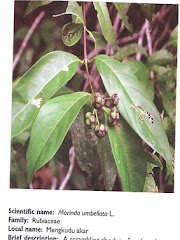Where are tropical rainforests found?
Tropical rainforests are located around the equator where temperatures stay near 80 degrees year round. Rainforests receive 160 to 400 inches (400-1000 cm) of rain each year. The largest rainforests are in Brazil (South America), Zaire (Africa) and Indonesia (South East Asia). Other tropical rainforest places are in Hawaii and the islands of the Pacific & Caribbean.
What is the tropical rainforest?
The Tropical Rainforest is a forest occurring in tropical areas of heavy rainfall. It is abundant with many species of wildlife and vegetation. Rainforests cover less than two percent of the Earth's surface. They are home to some 50 to 70 percent of all life forms on our planet. Rainforests are the most productive and most complex ecosystems on Earth.
What is the structure of vegetation in the rainforest?
Emergents are the tallest trees and are usually over 50 metres tall. The Kapok tree is an example of an emergent.
The sea of leaves blocking out the sun from the lower layers is called the canopy. The canopy contains over 50% of the rainforest wildlife. This includes birds, snakes and monkeys. Lianas (vines) climb to the canopy to reach this sun light.
The under canopy mainly contains bare tree trunks and lianas.
The shrub layer has the densest plant growth. It contains shrubs and ferns and other plants needing less light. Saplings of emergents and canopy trees can also be found here.
The forest floor is usually dark and damp. It contains a layer of rotting leaves and dead animals called litter. This decomposes rapidly (within 6 weeks) to form a thin humus, rich in nutrients.
How did the tropical rainforest get like this?
The high rainfall and year-round high temperatures are ideal conditions for vegetation growth. The wide range of plants encourage a huge variety of insects, birds and animals.
How has vegetation adapted to the climate?
In the tropical rainforest most trees in the rainforest have wide buttress roots. This is to support them as they grow incredibly tall (over 200ft in some cases) as there is great competition for sunlight. Lianas (vines) grow around trees as they bid to reach sunlight. The leaves of many trees are waxy and have drip tips to allow water to run off them (so that water does not gather on leaves and cause them to rot, it also allows water to reach the roots on the forest floor). Leaf stems are also flexible to allow leaves to move with the sun to maximise photosynthesis.
What is the impact of humans on the tropical rainforest?
Deforestation (cutting down trees) is a major problem caused by humans in the tropical rainforest. Global Rates of Deforestation:
2.47 acres (1 hectare) per second: equivalent to two U.S. football fields
150 acres (60 hectares) per minute
214,000 acres (86,000 hectares) per day: an area larger than New York City
78 million acres (31 million hectares) per year: an area larger than Poland
The image below shows some of the causes and effects of deforestation in the Amazon Rainforest. Place you mouse over the image to discover the causes. Click to view information on each factor.
Slash and burn
Most clearances are still by the local people and tribes needing land on which to grow crops. They clear the forest by ‘slash and burn’. Vegetation is cut down and then burned. The ash acts like a fertiliser adder nutrients to the soil. When the soil begins to turn infertile (usually after 3-5 years) the people move on. This is called shifting cultivation. It is a sustainable method of farming in the rainforest. It ensures the forest will recover.
Road Building
The Transamazon Highway has allowed increased access to the Amazon Rainforest.
Logging
Commercial logging is the major cause of primary rainforest destruction in South East Asia and Africa. World wide, it is responsible for the destruction of 5 million ha. per year. Logging roads enable landless people to enter the forest. In Africa, 75% of land being cleared by peasant farmers is land that has been previously logged.
Cattle Ranching
Ranching is a major cause of deforestation, particularly in Central and South America. In Central America, two-thirds of lowland tropical forests have been turned into pasture since 1950.
Hydroelectric Power
An unlimited supply of water and ideal river conditions have led to the development of hydro electric power stations (HEP Stations).
Farming
There are nearly 3 million landless people in Brazil alone. The government has cleared large areas of the Amazon Rainforest and encouraged people to move there. The scheme has not been successful. Farmers stay on the same land and attempt to farm it year after year. Nutrients in the soil are quickly exhausted as there is no longer a humus layer to provide nutrients. The soil becomes infertile and nothing will grow.
Mining
The mining of iron ore, bauxite , gold, oil and other minerals have benefited many LEDCs. However, it has also devastated large areas of rainforest e.g. The Amazon.
Deforestation is causing many problems at a range of scales:
Local:
Ecosystem
About 80% of the rainforests nutrients comes from trees and plants. That leaves 20% of the nutrients in the soil. The nutrients from the leaves that fall are instantly recycled back up into the plants and trees. When a rainforest is clear-cut, conditions change very quickly. The soil dries up in the sun. When it rains, it washes the soil away. The rainforest never fully recovers. Wildlife and plant life is reduced.
Elimination of Indian groups and their way of life
Estimates suggest that 80% of forest Indians have died since the arrival of Europeans in the sixteenth century. Most have died from western diseases such as malaria to which they have no immunity. Those remaining have been forced away by the construction of roads, ranches, mines and reservoirs
Soil Erosion
When vegetation is removed soil is left exposed to the heavy equatorial rainfall. It is rapidly eroded. The removal of top soil means little vegetation will grow. Also, soil erosion leads to flooding as soil is deposited on river beds.
National:
Deforestation can consume a country's only natural resource. If deforestation is not managed in a sustainable manner a country's only natural resource could be lost forever.
Global:
Global Warming
Rainforest canopies absorb carbon dioxide which is a gas in the atmosphere. When the rainforests are burned and cleared, the carbon is released. Also, when trees are cut down they can no longer absorb carbon dioxide. This means more carbon dioxide is in the atmosphere. Carbon dioxide allows heat through the atmosphere (suns rays). However, it will not allow reflected energy to escape from the atmosphere. This is called the greenhouse effect and causes global warming.
What is the future for the tropical rainforest? - Sustainable Development
If development in the rainforest is to be sustainable (e.g. although the resources are used to aid development, it/they will still exist for future generations to use) a number of measures must be taken. These include:
Afforestation - Trees should be replanted in areas of deforestation.
Shifting Cultivation - Farmers should move on after 2-3 years to allow the rainforest to recover.
Rubber tapping - More sustainable methods of exploiting the rainforest should be pursued e.g. rubber tapping
Measuring trees - Trees should only be cut down when they reach a certain size. This will ensure younger trees survive longer and will encourage careful management of the rainforest.
أَلَمْ تَرَ أَنَّ اللَّهَ يُسَبِّحُ لَهُ مَنْ فِي السَّمَاوَاتِ وَالأرْضِ وَالطَّيْرُ صَافَّاتٍ كُلٌّ قَدْ عَلِمَ صَلاتَهُ وَتَسْبِيحَهُ وَاللَّهُ عَلِيمٌ بِمَا يَفْعَلُونَ Tidakkah kamu tahu bahwasanya Allah: kepada-Nya bertasbih apa yang di langit dan di bumi dan (juga) burung dengan mengembangkan sayapnya. Masing-masing telah mengetahui (cara) solat dan tasbihnya, dan Allah Amat Mengetahui apa yang mereka kerjakan. an-Nur:41
Tazkirah
Sami Yusuf_try not to cry
mu'allim Muhammad Rasulullah Sallallahu alaihi waSalam
ummi_mak_mother_ibu_Sami Yusuf
zikir Tok Guru Nik Abdul Aziz Nik Mat Mu'allimul Mursyidi
syeikh masyari afasi
ruang rindu
song
Arisu Rozah
Usia 40

Mudah mudahan diluaskan rezeki anugerah Allah
usia 40 tahun

UPM

Kuatan Pahe Darul Makmur
pemakaian serban semsa menunaikan solat_InsyaAllah ada sawaaban anugerah Allah
Rempuh halangan

Abah_menyokong kuat oengajian Ijazah UPM

usia 39 tahun

usia 23 tahun_UPM
An_Namiru

Ijazah Pengurusan Hutan UPM

General Lumber_Nik Mahmud Nik Hasan

Chengal

Tauliah

Semasa tugas dgn general lumber

PALAPES UPM

UPM

Rumah yang lawa

Muhammad_Abdullah CD
semasa bermukim di Kuatan Pahe Darul Makmur
Ijazah

air terjun

Borneo land

GREEN PEACE
GREEN PEACE
Kelang

Ahlul Bayti_ Sayid Alawi Al Maliki

Asadu_ Tenang serta Berani

atTiflatul Falasthiniin

Sayid Muhammad Ahlul Bayt keturunan Rasulullah

AnNamiru_SAFARI_Kembara

AnNamiru_resting

Hamas

sabaha anNamiru fil nahri

Namir sedang membersih

Tok Guru Mualimul_Mursyid

An_Namiru
.jpg)
Namir_istirehat
.jpg)
SaaRa AnNamiru fil_Midan
.jpg)
Renungan Sang Harimau_Sabaha AnNamiru
.jpg)
Syaraba AnNamiru Ma_A
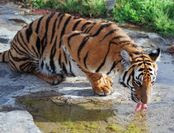.jpg)
AnNamiru_Riadhah
.jpg)
AnNamiru_Riadhah
.jpg)
AnNimru ma_A waladuha
Namir fil_Ghabi (sebut Robi...
Namir

AdDubbu_Beruang di hutan

Amu Syahidan Wa La Tuba lil_A'duwwi

AsSyahid

Namir

Tangkas
najwa dan irah

sungai

najwa

najwa

Kaabatul musyarrafah

unta

Jabal Rahmah

masjid nabawi

masjid quba

dr.eg

najwa dan hadhirah

along[macho]
![along[macho]](https://blogger.googleusercontent.com/img/b/R29vZ2xl/AVvXsEjuMi7D33CmR0_KXrCW2XigfLcUuQurcvtqOS139ncCwEzCyB-jUopk7QK7anADIenJEm2S0N6gAY1ubnACYXewgiAsI3rBjnLTawM39alLL-rEopOoVqn0w5WpLhPJH3hrXNtchEhgtyaI/s240/P7150023.JPG)
harissa dan hadhirah

adik beradik
Tongkat Ali

Tongkat Ali
herba kacip Fatimah
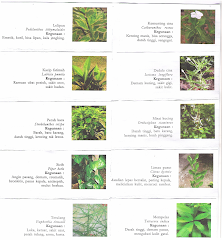
herba Kacip Fatimah
hempedu beruang
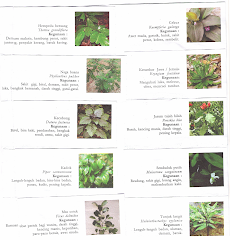
hempedu beruang
hempedu bumi

hempedu bumi
herba misai kucing

herba misai kucing
herba tongkat Ali
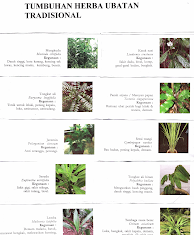.png)
Tongkat Ali
Ulama'

Ulama'
kapal terbang milik kerajaan negara ini yang dipakai pemimpin negara

kapal terbang
Adakah Insan ini Syahid

Syahid
Tok Ayah Haji Ismail

Saifuddin bersama Zakaria

Dinner....
Sukacita Kedatangan Tetamu
Pengikut
Kalimah Yang Baik

Ubi Jaga

Ubi Jaga
Arkib Blog
Burung Lang Rajawali

Chinese Sparrowhawk
Kelicap Mayang Kelapa

Brown-Throated Sunbird
Kopiah

Pokok Damar Minyak

Kacip Fatimah
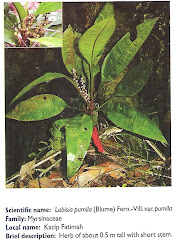
Mengkudu Akar
